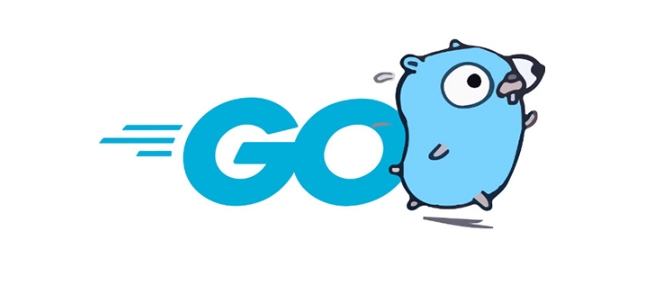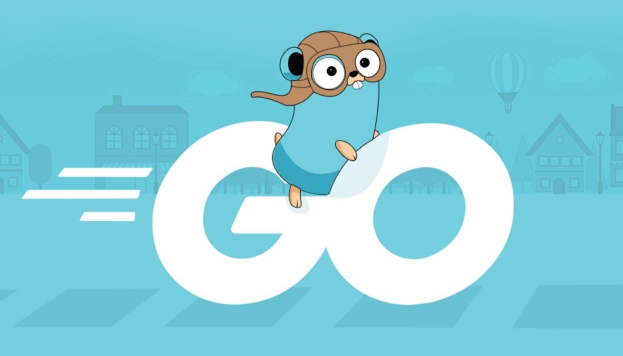 Backend Development
Backend Development
 Golang
Golang
 What is the zero value of a golang struct and how does it affect behavior?
What is the zero value of a golang struct and how does it affect behavior?
What is the zero value of a golang struct and how does it affect behavior?
Jun 29, 2025 am 12:54 AMIn Go, the zero value of the structure means that the fields are automatically set to the default value of their respective types when they are not explicitly initialized. For example, int is 0, string is an empty string, pointer is nil, etc. Declaring an uninitialized struct variable will put it in a legal but possibly incorrect state, which will affect logical judgment, data verification and state control. 1. To determine whether struct is zero, it can be achieved by comparing it with the type zero value, but if it contains uncomparable fields, you need to use a reflection package; 2. The zero value may cause misjudgment of valid data, affect JSON serialization output, and change the struct comparison result; 3. Methods to avoid problems include using pointer fields, adding the "whether set" flag, using a third-party library to judge the zero value, and encapsulation constructor to ensure initialization. Understanding the zero-value mechanism can help write more robust Go code.

In Go, the zero value of a struct means that when it is declared but not explicitly initialized, its fields are automatically set to the default zero value of their respective types. For example, int is 0, string is an empty string, bool is false , pointer is nil , etc.

This means that if you define a struct variable but don't assign it a value, it still has a "legal" state, just that each field is in their initial zero state.

This behavior will affect your program's logical judgment, data verification, and some state controls that rely on non-zero values.
Basic performance of Struct zero value
When you declare a struct instance but do not initialize, Go automatically sets all its fields to zero values ??of the corresponding type:

type User struct {
Name string
Age int
}
var u User
fmt.Println(u) // {"" 0} At this time, u.Name is an empty string and u.Age is 0. This may lead to some misjudgment, such as we may mistakenly think that the user is really 0 years old, rather than "not yet set".
How to determine whether a struct is zero?
Sometimes we need to know whether a struct is still in a zero-value state, such as to determine whether certain operations should be performed.
Go does not have a built-in method to determine whether a struct is zero, but it can be achieved by comparing the entire structure with its type zero value:
u := User{}
if u == (User{}) {
fmt.Println("u is zero value")
}However, this method is only applicable to cases where all fields are comparable types (such as not including slice, map, etc.). This method fails if the structure contains uncomparable fields.
A common practice is to use reflect packages to check whether the field has zero values ??one by one. Although it is a little more complicated, it is more applicable.
The impact of Struct zero value on program logic
There are several notable points in actual development of Struct's zero value:
Misjudged valid data : For example, a certain field is of type
int, and the default value is 0. If this value is used without judgment, "not set" may be regarded as "real value".Affects JSON serialization output : When using
json.Marshal, the zero-value field will also be serialized. If you want to ignore the zero value field, you can add the,omitemptytag:type User struct { Name string `json:"name,omitempty"` Age int `json:"age,omitempty"` }Behavior as a map key or for comparison : If both structs are zero values, they will be considered equal when compared, which may be an unexpected result in some scenarios.
Use a pointer instead of a value type field so that the unset field can be
nilinstead of a seemingly valid zero value.Add the judgment logic of the field "whether it has been set" in the business logic, such as using an additional Boolean flag.
Use the
IsZeroValuefunction provided by third-party libraries such asgithub.com/mitchellh/go-zeroextto determine whether struct is zero.Try to explicitly assign values ??when initializing struct, or encapsulate constructors to ensure reasonable initialization of fields.
How to avoid problems caused by zero value?
To avoid the potential problems caused by struct zero value, the following methods can be considered:
Basically that's it. The zero-value mechanism of struct is part of Go's design, and understanding it helps write more robust and secure code.
The above is the detailed content of What is the zero value of a golang struct and how does it affect behavior?. For more information, please follow other related articles on the PHP Chinese website!

Hot AI Tools

Undress AI Tool
Undress images for free

Undresser.AI Undress
AI-powered app for creating realistic nude photos

AI Clothes Remover
Online AI tool for removing clothes from photos.

Clothoff.io
AI clothes remover

Video Face Swap
Swap faces in any video effortlessly with our completely free AI face swap tool!

Hot Article

Hot Tools

Notepad++7.3.1
Easy-to-use and free code editor

SublimeText3 Chinese version
Chinese version, very easy to use

Zend Studio 13.0.1
Powerful PHP integrated development environment

Dreamweaver CS6
Visual web development tools

SublimeText3 Mac version
God-level code editing software (SublimeText3)

Hot Topics
 Understanding the Performance Differences Between Golang and Python for Web APIs
Jul 03, 2025 am 02:40 AM
Understanding the Performance Differences Between Golang and Python for Web APIs
Jul 03, 2025 am 02:40 AM
Golangofferssuperiorperformance,nativeconcurrencyviagoroutines,andefficientresourceusage,makingitidealforhigh-traffic,low-latencyAPIs;2.Python,whileslowerduetointerpretationandtheGIL,provideseasierdevelopment,arichecosystem,andisbettersuitedforI/O-bo
 Is golang frontend or backend
Jul 08, 2025 am 01:44 AM
Is golang frontend or backend
Jul 08, 2025 am 01:44 AM
Golang is mainly used for back-end development, but it can also play an indirect role in the front-end field. Its design goals focus on high-performance, concurrent processing and system-level programming, and are suitable for building back-end applications such as API servers, microservices, distributed systems, database operations and CLI tools. Although Golang is not the mainstream language for web front-end, it can be compiled into JavaScript through GopherJS, run on WebAssembly through TinyGo, or generate HTML pages with a template engine to participate in front-end development. However, modern front-end development still needs to rely on JavaScript/TypeScript and its ecosystem. Therefore, Golang is more suitable for the technology stack selection with high-performance backend as the core.
 How to build a GraphQL API in golang
Jul 08, 2025 am 01:03 AM
How to build a GraphQL API in golang
Jul 08, 2025 am 01:03 AM
To build a GraphQLAPI in Go, it is recommended to use the gqlgen library to improve development efficiency. 1. First select the appropriate library, such as gqlgen, which supports automatic code generation based on schema; 2. Then define GraphQLschema, describe the API structure and query portal, such as defining Post types and query methods; 3. Then initialize the project and generate basic code to implement business logic in resolver; 4. Finally, connect GraphQLhandler to HTTPserver and test the API through the built-in Playground. Notes include field naming specifications, error handling, performance optimization and security settings to ensure project maintenance
 How to install Go
Jul 09, 2025 am 02:37 AM
How to install Go
Jul 09, 2025 am 02:37 AM
The key to installing Go is to select the correct version, configure environment variables, and verify the installation. 1. Go to the official website to download the installation package of the corresponding system. Windows uses .msi files, macOS uses .pkg files, Linux uses .tar.gz files and unzip them to /usr/local directory; 2. Configure environment variables, edit ~/.bashrc or ~/.zshrc in Linux/macOS to add PATH and GOPATH, and Windows set PATH to Go in the system properties; 3. Use the government command to verify the installation, and run the test program hello.go to confirm that the compilation and execution are normal. PATH settings and loops throughout the process
 Resource Consumption (CPU/Memory) Benchmarks for Typical Golang vs Python Web Services
Jul 03, 2025 am 02:38 AM
Resource Consumption (CPU/Memory) Benchmarks for Typical Golang vs Python Web Services
Jul 03, 2025 am 02:38 AM
Golang usually consumes less CPU and memory than Python when building web services. 1. Golang's goroutine model is efficient in scheduling, has strong concurrent request processing capabilities, and has lower CPU usage; 2. Go is compiled into native code, does not rely on virtual machines during runtime, and has smaller memory usage; 3. Python has greater CPU and memory overhead in concurrent scenarios due to GIL and interpretation execution mechanism; 4. Although Python has high development efficiency and rich ecosystem, it consumes a high resource, which is suitable for scenarios with low concurrency requirements.
 Go sync.WaitGroup example
Jul 09, 2025 am 01:48 AM
Go sync.WaitGroup example
Jul 09, 2025 am 01:48 AM
sync.WaitGroup is used to wait for a group of goroutines to complete the task. Its core is to work together through three methods: Add, Done, and Wait. 1.Add(n) Set the number of goroutines to wait; 2.Done() is called at the end of each goroutine, and the count is reduced by one; 3.Wait() blocks the main coroutine until all tasks are completed. When using it, please note: Add should be called outside the goroutine, avoid duplicate Wait, and be sure to ensure that Don is called. It is recommended to use it with defer. It is common in concurrent crawling of web pages, batch data processing and other scenarios, and can effectively control the concurrency process.
 Go embed package tutorial
Jul 09, 2025 am 02:46 AM
Go embed package tutorial
Jul 09, 2025 am 02:46 AM
Using Go's embed package can easily embed static resources into binary, suitable for web services to package HTML, CSS, pictures and other files. 1. Declare the embedded resource to add //go:embed comment before the variable, such as embedding a single file hello.txt; 2. It can be embedded in the entire directory such as static/*, and realize multi-file packaging through embed.FS; 3. It is recommended to switch the disk loading mode through buildtag or environment variables to improve efficiency; 4. Pay attention to path accuracy, file size limitations and read-only characteristics of embedded resources. Rational use of embed can simplify deployment and optimize project structure.
 Evaluating Code Readability and Maintainability: Golang vs Python Perspectives
Jul 03, 2025 am 02:40 AM
Evaluating Code Readability and Maintainability: Golang vs Python Perspectives
Jul 03, 2025 am 02:40 AM
WhenchoosingbetweenGolangandPythonforcodereadabilityandmaintainability,thedecisionhingesonteampriorities.1.Golangoffersstrictconsistencywithminimal,opinionatedsyntaxandbuilt-intoolinglikegofmt,ensuringuniformcodestyleandearlyerrordetection.2.Pythonpr





